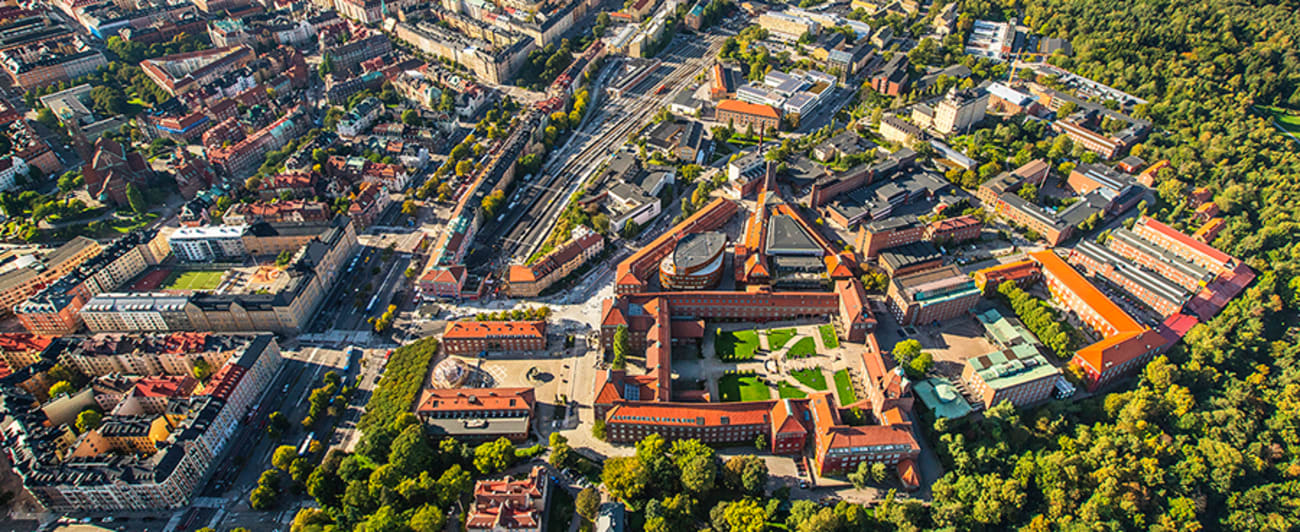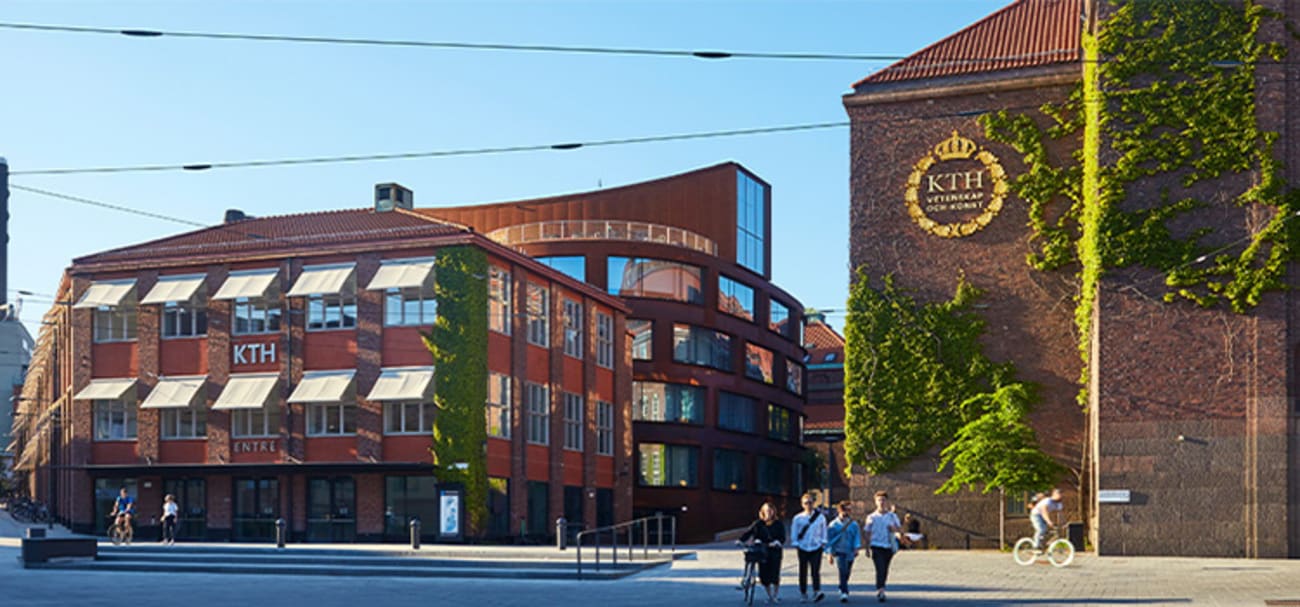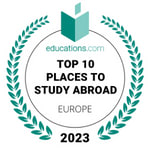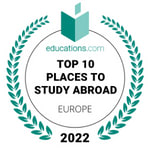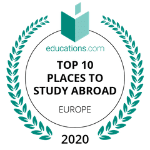KTH Royal Institute of Technology is Sweden's largest and most respected technical university. By choosing KTH, you gain access to a vibrant student life and a prestigious academic environment.

KTH Royal Institute of Technology
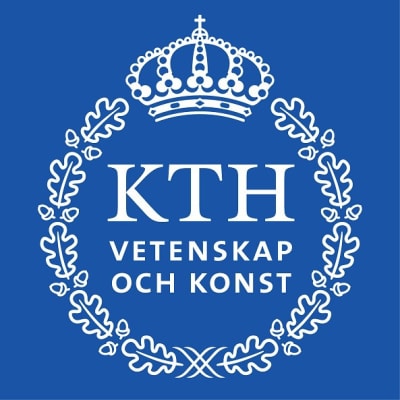
Introduction
KTH Royal Institute of Technology in Stockholm is one of Europe’s leading technical universities, as well as a key centre of intellectual talent and innovation. We are Sweden’s largest technical research and learning institution and home to students, researchers, and faculty from around the world dedicated to advancing knowledge.
History
KTH is a university with a rich history of pioneering ideas and innovation that dates back to 1827. For nearly 200 years KTH has educated students who have gone on to influence our present and make the technological advances that define modern society. Still today, KTH shapes the talents that will find the solutions for tomorrow’s challenges.
Research
KTH is working with industry and society in the pursuit of sustainable solutions to some of humanity’s most significant challenges: climate change, future energy supply, urbanisation, and quality of life for the rapidly-growing elderly population. We are addressing these with world-leading, high-impact research and education in natural sciences and all branches of engineering, as well as in architecture, industrial management, urban planning, history, and philosophy. Almost two-thirds of the SEK 4 billion turnovers are related to research.
Basic and applied research is performed side-by-side at KTH and interdisciplinary research is conducted in parallel with work in specific fields.
Career
KTH maintains close relationships with an expanding network of international companies and the industrial community in a number of fields, and working and studying here provides access to this network.
The latest career report shows that 94 percent of those who graduated from KTH 2010-2012 have been employed since they finished their degree and a remaining 6 percent have gone on to Ph.D. studies. Of the international student population, 30 percent go on to Ph.D. studies at KTH or other renowned universities. 32 percent of KTH Alumni leave Sweden for work or studies abroad. 13 percent lead others in their work, and 13 percent have already received their first managerial position.
Statistics
Campus Features
The four KTH campuses in Greater Stockholm, gather more than 12,000 full-time students, some 1,900 PhD students and approximately 3,700 full-time employees. The campuses are strategically located close to their areas of research and study, for example, KTH Kista is situated in the middle of the Kista ICT hub, with some of the world’s leading Information and Communications Technology companies. One of our other campuses, KTH Flemingsberg, is located in one of Northern Europe’s leading medical technology centres for research and industrial activity.
KTH has five campuses in and around Stockholm, each with its unique character and close connection to transports, accommodation, services and entertainment. The main KTH campus is located in central Stockholm. Its historical buildings date back to the early 20th century, and it is situated next to the Royal National City Park.
KTH Accommodation is a service to international students, assisting them in finding accommodation for their first academic year at KTH. Some international student groups are guaranteed housing through KTH while others need to find housing on their own. The vast public transportation system makes it possible to study in one part of Stockholm and live in another.
Gallery
Admissions
The academic year at KTH consists of two semesters of 20 weeks each, starting at the end of August and finishing early June. The application for studies at KTH starting in 2023 opens in mid-October. You apply through the Swedish national application system, University Admissions. Some Joint programmes have a later application deadline.
Scholarships and Funding
KTH offers four different scholarship opportunities for master's studies. The KTH Scholarship covers the tuition fee of a one or two-year master’s programme. The KTH One-Year Scholarship is aimed at current KTH master's programme students and covers the tuition fee of the second year of studies. The KTH Joint Programme Scholarship is aimed at students in certain joint programmes and covers the tuition fee for the study period spent at KTH. The KTH India Scholarship is aimed specifically at students from India.
KTH offers four different scholarship opportunities for master's studies:
- The KTH Scholarship covers the tuition fee of a one or two year master’s programme.
- The KTH One-Year Scholarship is aimed at current KTH master's programme students and covers the tuition fee of the second year of studies.
- The KTH Joint Programme Scholarship is aimed at students in certain joint programmes and covers the tuition fee for the study period spent at KTH.
- The KTH India Scholarship is aimed specifically at students from India.
Alumni Statistics
Rankings
KTH Royal Institute of Technology is the largest and most respected technical university in Sweden — ranked 89 in the QS World University Rankings 2023. Our reputation stems from our driven faculty and talented students, working together to shape a brighter future.
Please read more about the KTH rankings on our website.
Student Testimonials
Why study at KTH Royal Institute of Technology
KTH Royal Institute of Technology is the largest and highest-ranked technical university is Sweden and ranks among the top ten in Europe. With a strong focus on internationalization, the KTH campus is an arena for bringing highly talented students, teachers and researchers together to share perspectives from around the globe.
Sustainable development is a natural aspect of Swedish society and an integral part of KTH's operations and spirit. KTH is ranked 42 among universities world-wide when it comes to meeting the sustainable development goals, according to THE University Impact Ranking 2022. One of KTH's most important goals is that all graduates have up-to-date knowledge and tools to move society in a more sustainable direction. For each of our master's programmes, you can read about how the programme relates to the sustainable development goals and what knowledge and tools you will acquire to contribute to a more sustainable society.
Campus Life & Facilities
Being part of KTH means being part of the dynamic and bustling city of Stockholm, in addition to the abundance of activities you can take part in as a student. To get into the spirit of a true KTH student, the Student Union and other student organisations arrange activities to help you find friends for a lifetime.
Programs
- MSc Aerospace Engineering
- MSc Applied and Computational Mathematics
- MSc Architectural Lighting Design
- MSc Biostatistics and Data Science
- MSc Chemical Engineering for Energy and Environment
- MSc Civil and Architectural Engineering
- MSc Communication Systems
- MSc Computer Science
- MSc Computer Simulations for Science and Engineering COSSE
- MSc Cybersecurity
- MSc Decentralized Smart Energy Systems (DENSYS)
- MSc Electric Power Engineering
- MSc Electromagnetics, Fusion and Space Engineering
- MSc Embedded Systems
- MSc Energy for Smart Cities (SMCS)
- MSc Engineering Materials Science
- MSc Engineering Mechanics
- MSc Engineering Physics
- MSc Environmental Engineering and Sustainable Infrastructure
- MSc Environomical Pathways for Sustainable Energy Systems (SELECT)
- MSc ICT Innovation
- MSc ICT Innovation (EIT Digital)
- MSc Industrial Management
- MSc Industrial and Environmental Biotechnology
- MSc Information and Network Engineering
